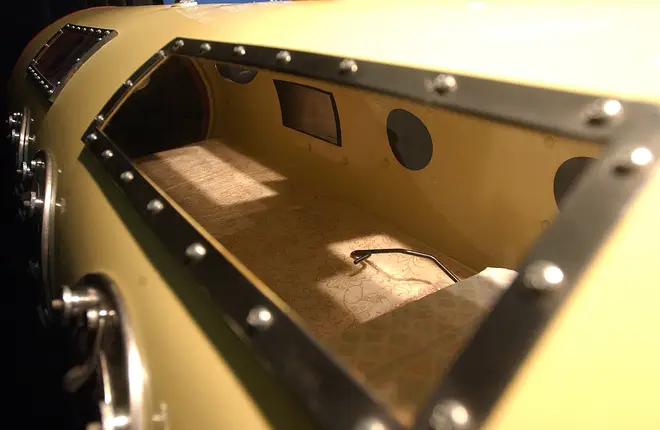
Clive Bull 1am - 4am
13 March 2024, 11:30

Paul Alexander has died after spending 70 years in an iron lung as a result of contracting polio as a child - but what did the life of 'Polio Paul' look like?
Paul Alexander, known as Polio Paul, died aged 78 on Monday after spending most of his life inside an iron lung.
Here’s everything to know about Paul Alexander - from his early life, to how he contracted polio and all the challenges he endured and overcame throughout his life.
Paul contracted polio when he was just six years old in 1952.
He caught the disease during the worst polio outbreak in US history, which saw a peak of almost 58,000 cases reported, which were mostly in children.
Polio, or poliomyelitis, is an extremely contagious virus that can infect a person’s spinal cord and cause paralysis. It can result in some becoming too weak to breathe on their own.
After Paul was diagnosed, he received an emergency tracheotomy and was placed in an iron lung to help his body fight the disease.
The disease made him almost completely paralysed from the neck down and he spent the next 18 months unable to talk due to the tracheostomy.
A year and a half after being admitted to hospital, his parents rented a portable generator which meant they could bring him home in his iron lung.
He was cleared to leave home because doctors believed he didn’t have much longer to live, but he went on to completely defy their expectations.
Read more: British husband and wife found dead on Caribbean paradise island

The iron lung which Alexander went on to spend the rest of his life in was invented in 1928.
It is an airtight capsule that covers the entire body, apart from the head, and works by creating a negative pressure vacuum around the patient which gently forces air into the lungs to allow the patient to breathe.
While the specific version of Paul’s iron lung has not been manufactured since the 1960s, as newer machines were developed, he never switched to a more modern model.
He said he had become used to his “old iron horse” and reportedly refused to get another hole in his throat, which would have been required in order to make the shift to a newer machine.
Paul spent the majority of his life in the iron lung, but in his early years he learned a technique called ‘glossopharyngeal breathing’, which he called ‘frog-breathing’.
It was a technique that required conscious effort and took him a year to be able to do it for just three minutes - but once he did it meant he could get out of the lung for brief periods.
He had to use the machine for sleep his entire life, as he couldn’t use the technique while unconscious, but learning to frog breathe saw him go on to defy the odds and make incredible achievements throughout his life.
After three years of practice, he could leave the lung for a few hours at a time, as he said the technique eventually became muscle memory.

After learning to breathe for long periods, he would time his intervals spent outside the lung with when other children finished school.
He made friends during his trips out, who started taking him out to the cinema, diners and eventually restaurants and bars.
At 21, he became the first person to graduate from a Dallas high school without ever physically attending a class. He graduated with almost straight As.
After repeated rejections for two years, he eventually received a place at Southern Methodist University in Dallas and later went to law school at the University of Texas at Austin.
He went on to become a lawyer in Dallas and Fort Worth and would represent his clients in a modified wheelchair that held his body upright.
He passed the bar exams aged 40, at which point he was living on his own and able to spend most days outside of the lung.
“You can’t believe how many people walked into my law office and saw my iron lung and said: ‘What is that?’,” Paul previously told the Guardian in an interview.
“I’d tell them: ‘It’s an iron lung.’ ‘What does it do?’ ‘Breathe for me.’ ‘Why?’ ‘I got polio when I was little.’”
He also wrote a memoir that took him five years to complete, each word written with a pen attached to a stick in his mouth.
As Paul got older his capacity to venture outside the iron lung dwindled, and he couldn’t leave the machine for more than five minutes at a time.
He outlived his parents and older brother, Nick, and eventually old friends - and even the iron lung itself, which had to be repaired in 2015 after it began to leak air.
Following the news of his death, Paul’s brother Philip said: “I am so gratitude to everybody who donated to my brother’s fundraiser.
“It allowed him to live his last few years stress-free. It will also pay for his funeral during this difficult time.
“It is absolutely incredible to read all the comments and know that so many people were inspired by Paul. I am just so grateful.”